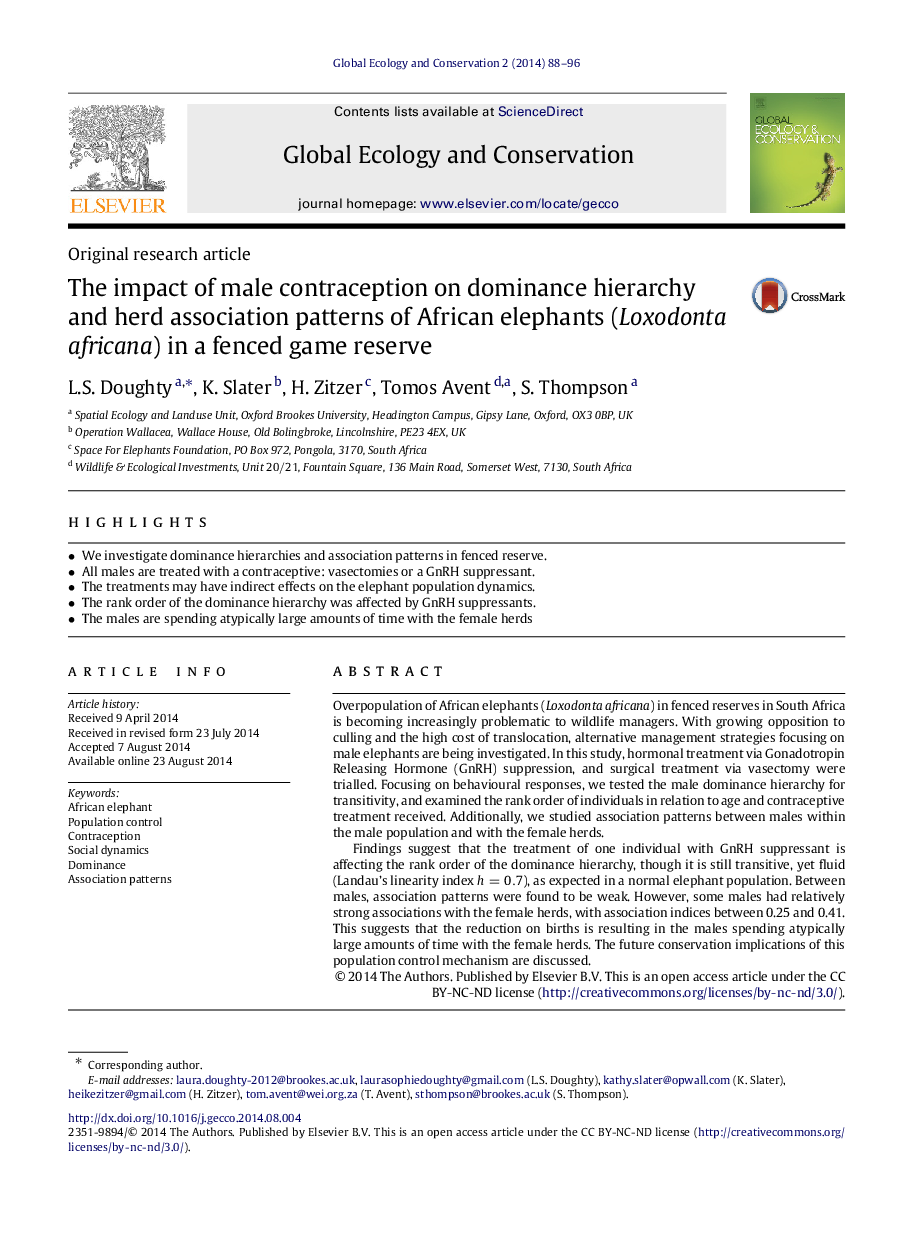| کد مقاله | کد نشریه | سال انتشار | مقاله انگلیسی | نسخه تمام متن |
|---|---|---|---|---|
| 4379672 | 1617665 | 2014 | 9 صفحه PDF | دانلود رایگان |

• We investigate dominance hierarchies and association patterns in fenced reserve.
• All males are treated with a contraceptive: vasectomies or a GnRH suppressant.
• The treatments may have indirect effects on the elephant population dynamics.
• The rank order of the dominance hierarchy was affected by GnRH suppressants.
• The males are spending atypically large amounts of time with the female herds
Overpopulation of African elephants (Loxodonta africana) in fenced reserves in South Africa is becoming increasingly problematic to wildlife managers. With growing opposition to culling and the high cost of translocation, alternative management strategies focusing on male elephants are being investigated. In this study, hormonal treatment via Gonadotropin Releasing Hormone (GnRH) suppression, and surgical treatment via vasectomy were trialled. Focusing on behavioural responses, we tested the male dominance hierarchy for transitivity, and examined the rank order of individuals in relation to age and contraceptive treatment received. Additionally, we studied association patterns between males within the male population and with the female herds.Findings suggest that the treatment of one individual with GnRH suppressant is affecting the rank order of the dominance hierarchy, though it is still transitive, yet fluid (Landau’s linearity index h=0.7h=0.7), as expected in a normal elephant population. Between males, association patterns were found to be weak. However, some males had relatively strong associations with the female herds, with association indices between 0.25 and 0.41. This suggests that the reduction on births is resulting in the males spending atypically large amounts of time with the female herds. The future conservation implications of this population control mechanism are discussed.
Journal: Global Ecology and Conservation - Volume 2, December 2014, Pages 88–96